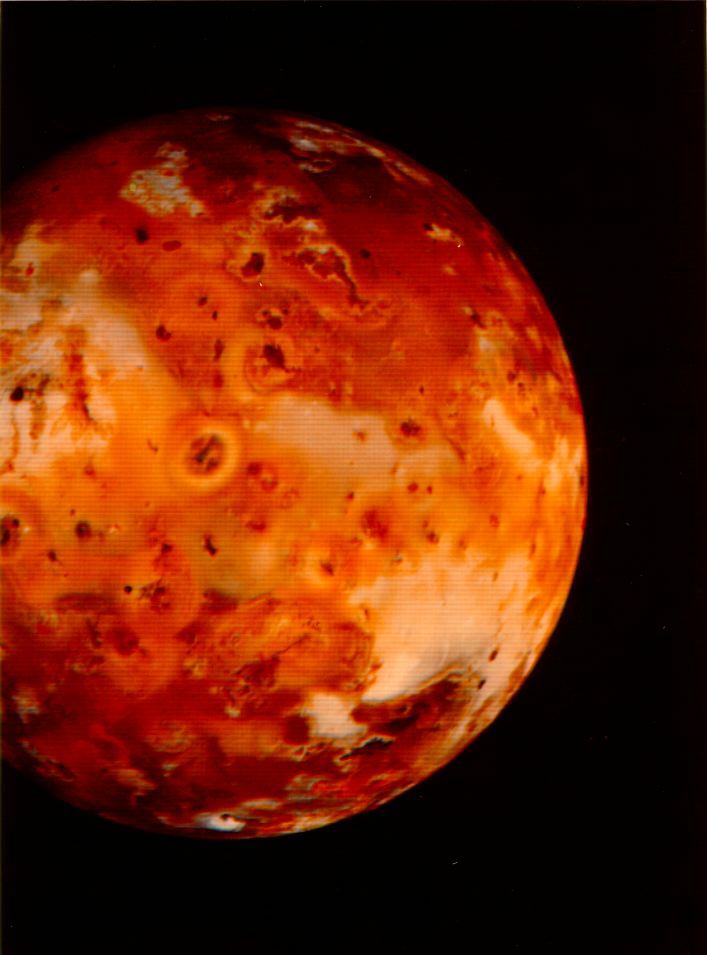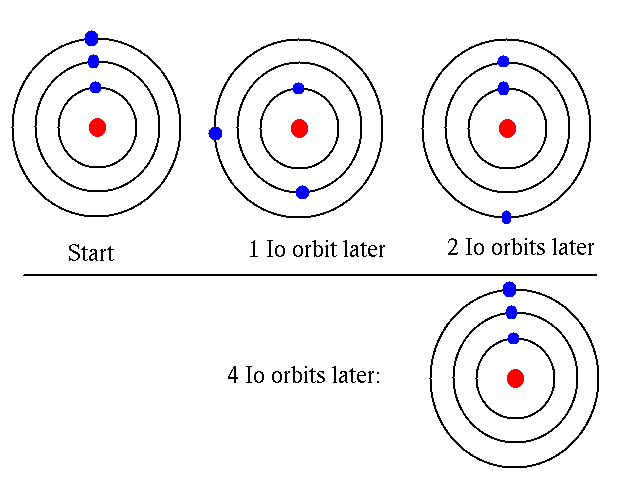Io
In the outer solar system, the equilibrium temperatures
are
low that small bodies should be rocky/icy, made up of rocky cores
covered
with ice.
Then Voyager 1 (1979) took the first detailed images
of
Io. Wow!

And here is the latest image
from Galileo
This ain't no ice ball!
Voyager found a very young surface, with active,
ongoing volcanic eruptions:

 Note: Io volcanos are more like Earth's
geysers
than like Earth's volcanos.
Note: Io volcanos are more like Earth's
geysers
than like Earth's volcanos.
-
Earth's geysers:
steam
vents upward through cracks, blowing out steam and water
-
Io's volcanos:
sulfur
dioxide (SO2) outgasses, throwing up SO2 and
sulfur.
Tvashat Catena (from Galileo)
Questions:
-
Where are the ices (the volatiles)?
-
Io too hot for volatiles; they escaped, or
perhaps never
condensed.
-
Why is the surface orange/yellow?
-
When sulfur cools, it turns a variety of colors.
-
Why so much sulfur? Actually sulfur is common in
solar system,
but its locked in the interiors of the terrestrial planets...
-
Why the heck is there so much volcanic
activity?
Io is hot. Why? Tidal effects
Remember how tides work:

Now, compare the tidal force Jupiter exerts on Io to
the
tidal force the Earth exerts on the Moon:

Big tidal force!
But
the presence of a tidal force by itself won't act to heat Io. Why
not?
We need another factor: Orbital
resonances.
Io, Europa, and Ganymede live
in
a 1:2:4 orbital resonance:
 So Io is constantly being pulled out of its locked
orbit
into an eccentric orbit. Jupiter, Europa, and Ganymede are playing
tug-of-war
with Io. As a result, Io lives on a slightly eccentric
orbit, sometimes a bit closer to Jupiter, sometimes a bit
farther.
So Io is constantly being pulled out of its locked
orbit
into an eccentric orbit. Jupiter, Europa, and Ganymede are playing
tug-of-war
with Io. As a result, Io lives on a slightly eccentric
orbit, sometimes a bit closer to Jupiter, sometimes a bit
farther.
The tidal force from Jupiter changes with distance,
so
Io
is constantly being ``stretched and squeezed'' by Jupiter --
the tidal bulges change elevation due to the changing tidal force.
Result
of this flexing: heat!
This was actually predicted by
Peale
etal (1979) just a few days before
Voyager flyby:
"...one might
speculate
that widespread and recurrent surface volcanism would occur...
Consequences
of a largely molten interior may be evident in pictures of Io's surface
returned by Voyager 1."






